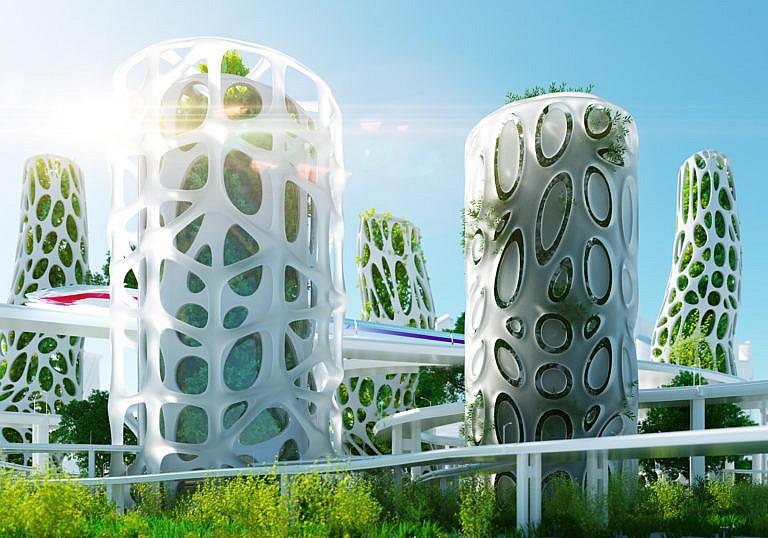‘Solarpunk’: The word of the month
The term to add to your vocabulary this month is all about a utopian future

(Andriy Onufriyenko/Getty Images)
Share
Solar panels masquerade as roads and stained-glass windows. Plant life is intertwined with infrastructure, and colourful handcrafted wares are sold along pedestrian walkways. There may be airships, but a Victorian-inspired, ominous steampunk landscape this is not. Nor has this near-future fantasy been corrupted by cyberpunk’s superintelligent singularities and artificial, post-human visions.
Enter a new aesthetic, inspired by art nouveau and Afrofuturism, that envisions a sustainable, often realistic, sometimes utopian next chapter in our story. It’s called solarpunk.
Although the label emerged about a decade ago, it is gaining traction: in 2018, a reference in the Los Angeles Review of Books; in 2020, another in the Washington Post. Arizona speculative fiction author Andrew Hudson worked on some of the first overtly solarpunk fiction—a story he co-wrote called “Sunshine State” won a climate fiction contest in 2016. “It’s responding to a fatigue for dystopian and post-apocalyptic material,” Hudson says, catching up with Maclean’s in the middle of a Colorado camping trip. “Solarpunk tends to be really interested in solutions to climate change and ways that we might reimagine our communities to make us more dignified and happy. It tries to be a re-evaluation of what high technology means.”
It’s a rebellion, too—hence the “punk”—against capitalism, anti-environmentalism and popular narratives about humanity’s decline. “Optimism has been taken away from us,” declares an online solarpunk manifesto, “and we are trying to take it back.”